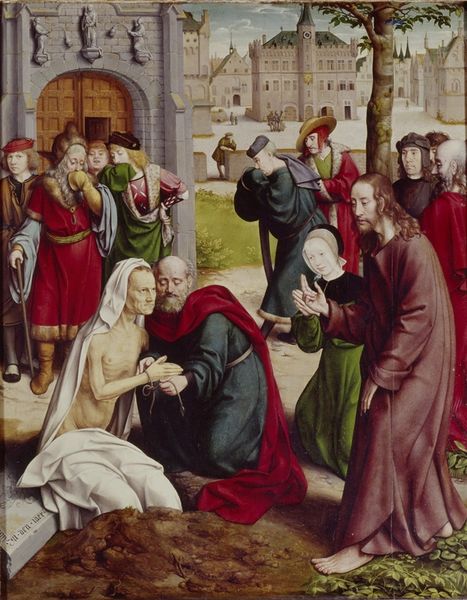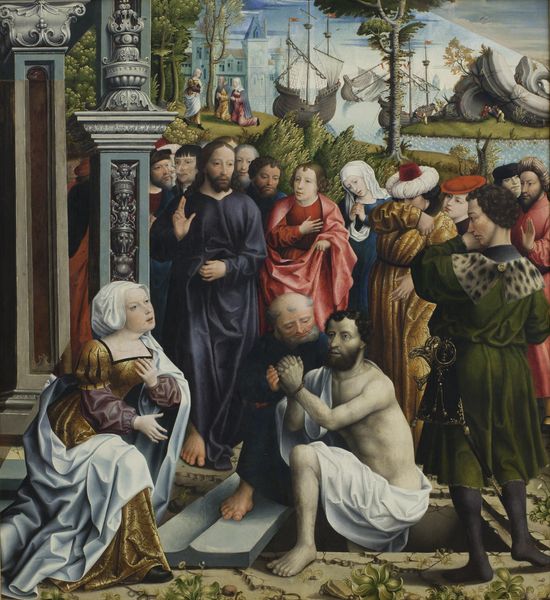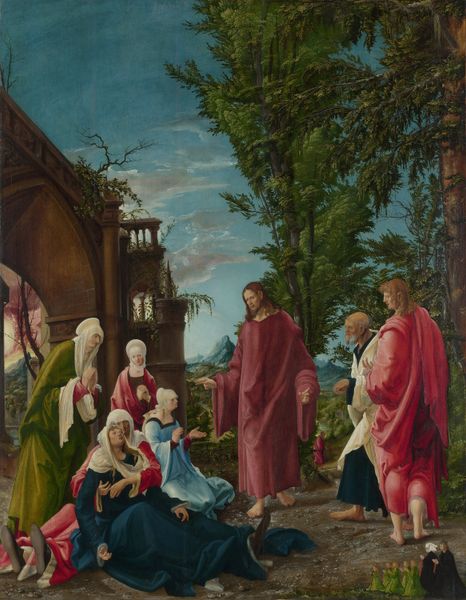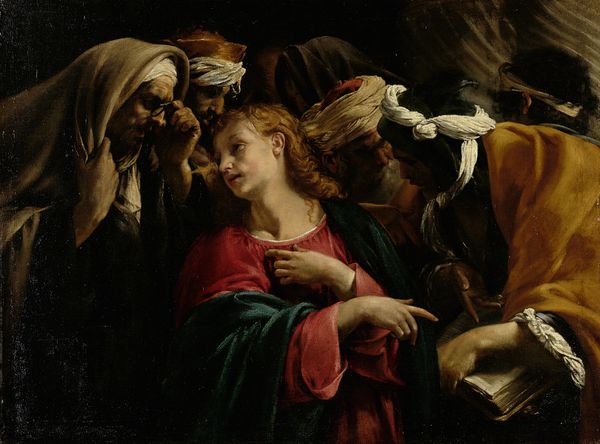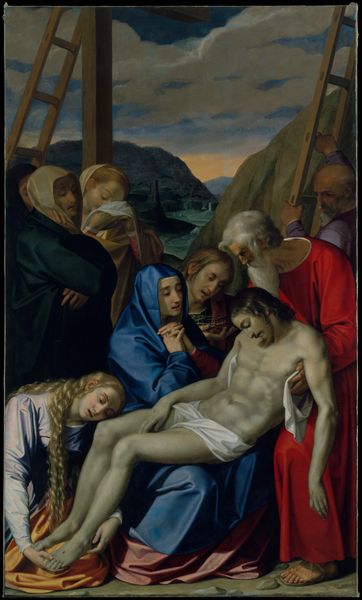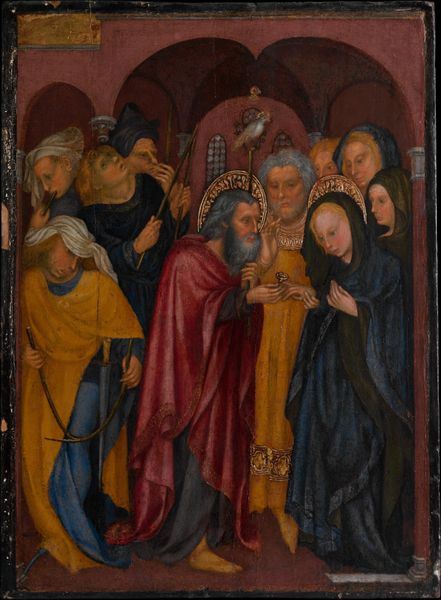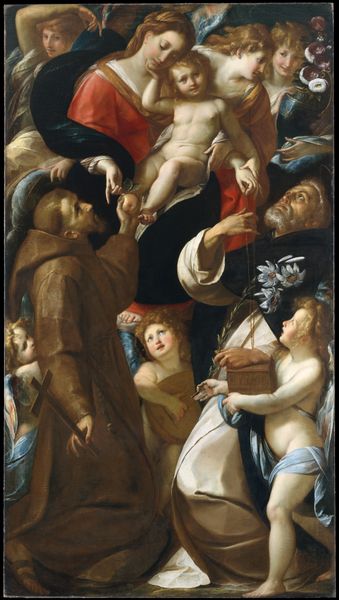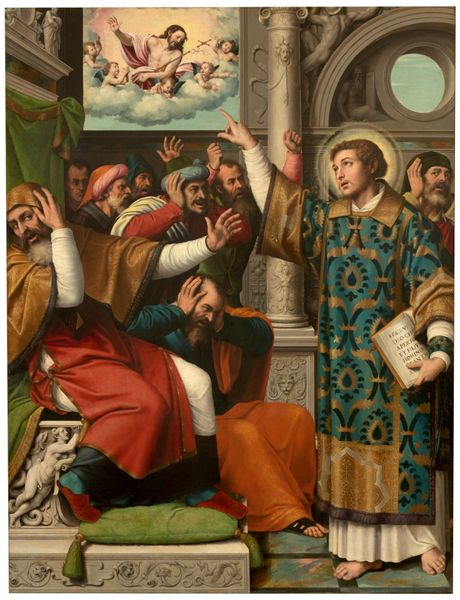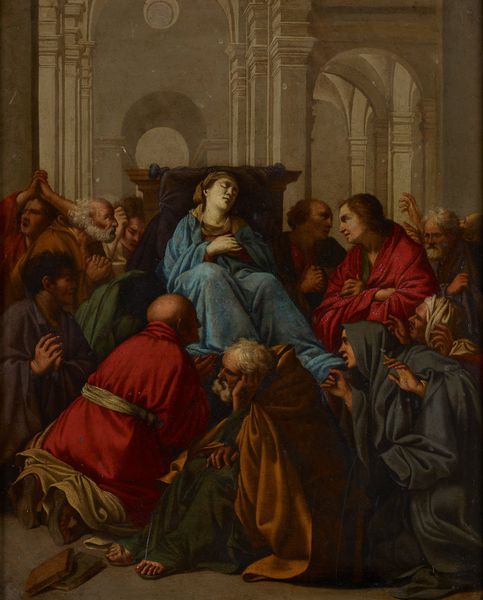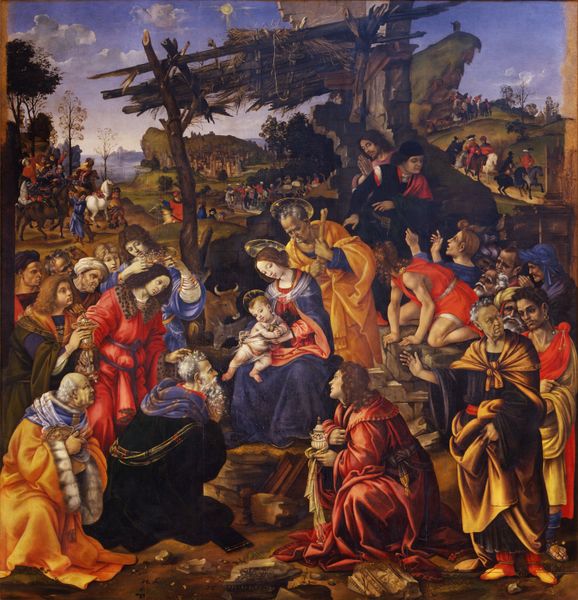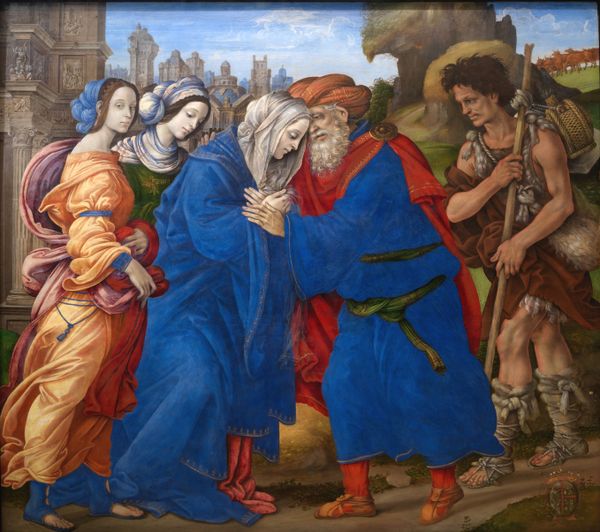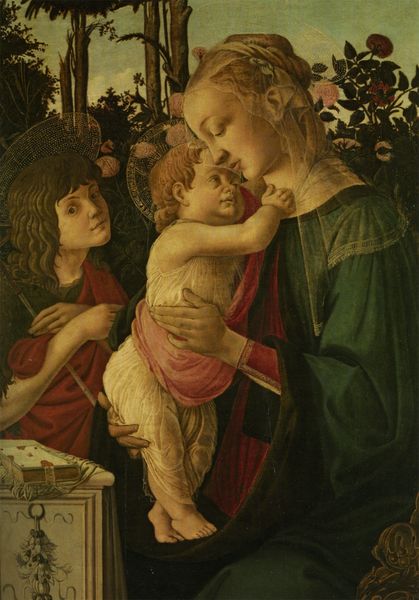
Dimensions: 59.8 x 42.3 x 1.3 cm
Copyright: Public Domain
Curator: The anguish here is palpable. It’s almost overwhelming at first glance. Editor: Indeed. We are looking at Philipp Uffenbach’s 1588 oil painting, "The Virgin Mary and Mourners at the Crucifixion," now residing at the Städel Museum. It presents a scene rife with sorrow. The colors are muted, and the figures are clustered tightly, adding to that feeling of compression. Curator: That collapse is critical. Mary, succumbing to what’s called the “Swoon of the Virgin,” becomes a key symbol in Passion narratives. Her collapse echoes not only grief but the crushing weight of prophecy fulfilled. Consider the recurring motif throughout art history where her collapse underscores her deep empathy and participation in Christ’s suffering, resonating deeply with the faithful. Editor: From an art-historical view, it’s worth considering how Uffenbach chose to stage this event so publicly. The way that a large crowd scene witnessing Christ's procession is framed in the background certainly shapes its political message. Who were the audiences meant to grapple with the suffering on display? Was it intended for didactic use within a religious community or for the broader public to reinforce faith amid religious strife? Curator: Definitely both intended meanings can coalesce. Remember, symbols always possess layered significance. The very act of depicting collective mourning – with Mary as the epicenter – invites communal identification, bridging the divine with human vulnerability and loss in art history. The surrounding mourners also visually carry this, sharing a powerful emotional narrative. The raised arms and upturned gazes channel shared feelings of despair and invocation toward the heavens. Editor: The painting’s emotional accessibility highlights a shift in the function of religious art, aimed at provoking empathy within increasingly literate urban audiences during this historical moment. Perhaps the display of public emotions itself reflects social changes affecting art at the time. Curator: Exactly, and what we perceive as individual emotion reflects shared beliefs and collective responses to grief within their society. Uffenbach seems quite aware of this cultural context. Editor: Ultimately, viewing art of this nature reveals much more than what's literally depicted. It reveals to us a great deal about society, religion, politics and human nature.
Comments
stadelmuseum almost 2 years ago
⋮
Her hands raised heavenward in a gesture of deepest distress, the Virgin Mary has sunk to the ground. Her body is grouped with those of the disciples offering her support and the mourning woman behind her in such a way as to imitate the form of Christ’s cross, which is being erected in the background. Philipp Uffenbach – the young Adam Elsheimer’s Frankfurt teacher – thus staged the Virgin suffering vicariously for her son. The pain endured by the Blessed Mother beneath the cross is intended to provide the faithful with access to the experience of Christ’s Passion.
Join the conversation
Join millions of artists and users on Artera today and experience the ultimate creative platform.
